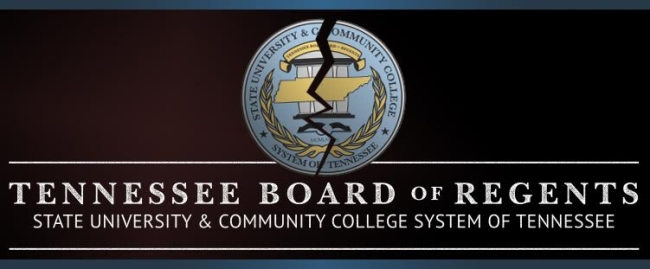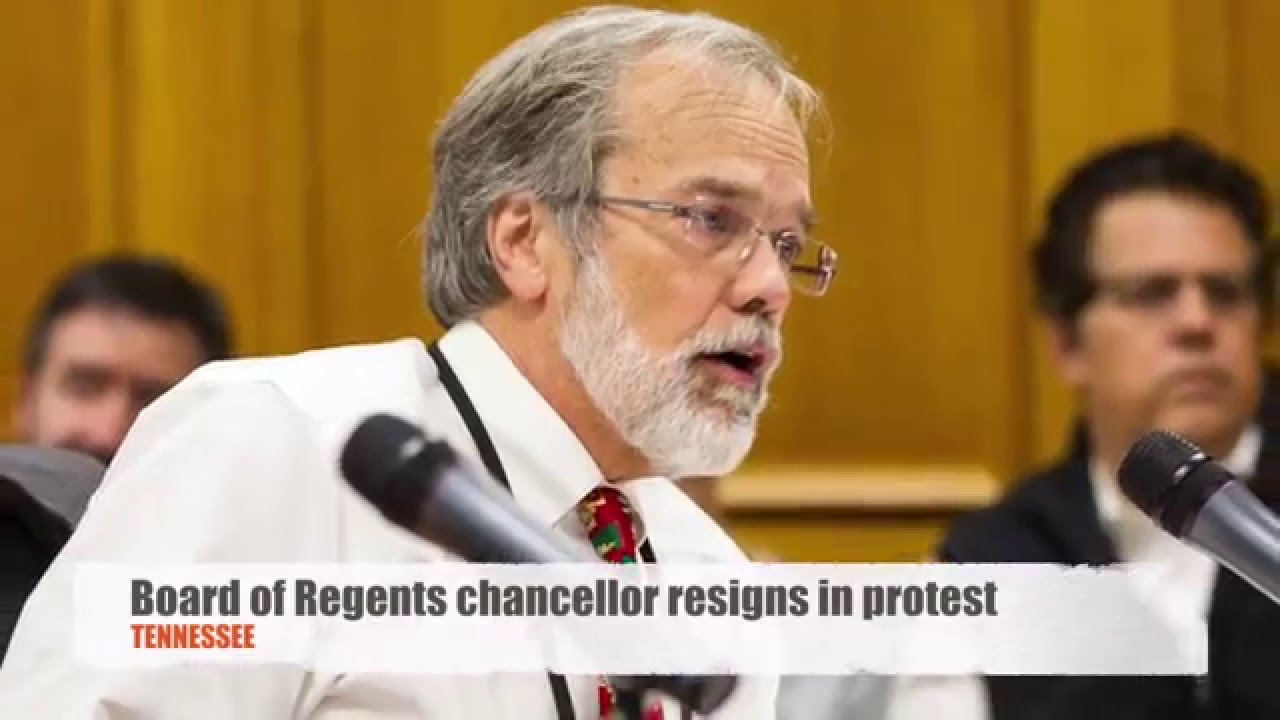You have /5 articles left.
Sign up for a free account or log in.

Photo illustration: Jordan Woll
Tennessee and its Republican governor, Bill Haslam, have become national models for public higher education governance in the last few years. The state's multifaceted efforts to increase college completion, make community college free for many residents, reduce remediation and fully fund public universities based on performance have shown how much can change when a strong governor sets a clear, ambitious agenda and the state's institutions work together to bring it about.
It's the kind of systemic change that is often hard to pull off in the largely fragmented and autonomous world of higher education.
That track record is all the more reason why so many public college leaders and higher education policy experts are perplexed, and in many cases disappointed, by Haslam's proposal to strip the Tennessee Board of Regents of its oversight of six public universities and give those institutions their own governing boards.
Under the governor's plan, which is making its way through the Legislature, the Board of Regents would focus attention on its 40 community and applied technology college members, who have seen their enrollments grow by 25 percent under the Tennessee Promise, one leg of Haslam's reform effort. The state's postsecondary coordinating body, Tennessee Higher Education Commission, would gain the ability to set tuition and other powers designed to strengthen its ability to continue to propel the state's higher ed agenda forward, as Haslam envisions it.

"If nothing else, the governor has earned the benefit of the doubt as a governor who understands higher education," says Mike Krause, executive director of the Haslam initiative known as Drive to 55, which is designed to equip 55 percent of the state's residents with a postsecondary credential by 2025. The 44-year-old system, whose institutions currently range from technical colleges training welders to a medical school, "just isn't configured in the most optimal way" for today's postsecondary needs in Tennessee, Krause says.
While some agree with Krause that Tennessee's recent policy success should earn Haslam the benefit of the doubt about his proposed restructuring, the plan confounds others who say much of that progress might have been impossible in the first place without the structure the governor would now undo.
Not only that, but "this change really has the potential to reverse the progress we've made," says John Morgan, who resigned his position as chancellor of the Tennessee Board of Regents in objection to Haslam's plan.
And for national experts on higher education governance, the proposed change in Tennessee is part of a larger trend in which individual universities seek and gain more independence to pursue their own interests over those of their states -- and evidence that even in a state that has led the way in recent years on coherent public higher education governance, politics can trump good policy.
Policy Progress
Tennessee's recent accomplishments read like a higher education reform group's wish list of every higher education reform group. Since Haslam took office in 2011, Tennessee has:
- Undertaken the Drive to 55 initiative in 2013, which increased freshman enrollment in higher education by double digits this year and has begun to raise the number of credentials awarded by the state's public institutions.
- Established the Tennessee Promise, the nation’s first statewide free community college program, attracting almost 120,000 applicants in two years.
- Created Tennessee Reconnect, enabling working adults to go to technical college tuition free. It enrolled 5,000 students in its first fall of operation.
- Reduced remedial mathematics enrollment by 11 percent since 2012 as part of its Seamless Alignment and Integration of Learning Support (SAILS) program.
Much of the state's momentum was enabled by the new outcomes-based funding system enacted in 2010, led by Haslam's predecessor, Democrat Phil Bredesen.
State and national experts give multiple parties props for Tennessee's advances. Most start with Haslam, the latest in a string of state leaders (many of them Southern, including North Carolina's Jim Hunt, Georgia's Zell Miller and Kentucky's Paul Patton) who have placed big bets on higher education and sought to be remembered as an "education governor."
The Tennessee Higher Education Commission, the state's coordinating body for postsecondary education, has played a crucially central role. It is widely credited with developing the performance funding formula as well as the state's new program for adult learners, part of the larger Drive to 55 effort.
And by all accounts, the Tennessee Board of Regents and Morgan, its chancellor from 2010 until his resignation in January, also have been essential.

As the governing body for a diverse set of institutions with missions and goals that are widely divergent and sometimes in tension, the board was particularly key in minimizing (if not avoiding) the kind of sector warfare that often torpedoes big public policy changes. That was especially true of a key piece of the reform plan, the Tennessee Promise, that clearly favored the interests of community colleges over four-year institutions in the state.
The roles played by the various parties -- the other major player is the University of Tennessee system, which governs the state's three other public universities and several health and agriculture centers -- have created what Morgan calls "near perfect alignment in higher ed in Tennessee" in recent years.
So why mess with it?
Aides to the governor characterize the restructuring proposal -- known as the Focus on College and University Success (FOCUS) Act -- as the logical next step in the state's postsecondary maturation. The Board of Regents has been in place since 1972 and has evolved over that time from serving 64,000 to nearly 200,000 students at dozens of institutions with radically different missions. "That feels like a breadth of mission that would be ambitious for any system to take on," says Krause, the aide to Haslam.
The most pressing change on which advocates for the restructuring are focusing is the Tennessee Promise, which is expected to continue to send enrollments at the state's community and technical colleges soaring. Haslam and supporters of the change argue that the two-year institutions need much more attention and oversight than they have received in a system they share with four-year universities, given that universities almost always get the spotlight compared to two-year institutions.
The four-year institutions governed by the Board of Regents argue they, too, have been impaired by being governed by a statewide entity dominated (numerically, at least) by two-year institutions. "When the membership is predominantly community colleges, that tends to consume a lot of time and energy on the [board's] agenda," says M. David Rudd, president of the University of Memphis.
He and other campus leaders argue that having local boards would give the regents' six four-year institutions much more latitude to move in directions that make sense for their cities and regions, in ways that vary from institution to institution.
Brian Noland, president of East Tennessee State University (and himself a former coordinating board official, in West Virginia and in Tennessee a decade ago), says being governed by a central board nearly 300 miles away in Nashville has created a "paternalistic system" that limits shared governance on his campus. Having its own board would also bolster East Tennessee State's "philanthropic reach" by recruiting prominent (and hopefully wealthy) individuals "who are not now involved with the institution" while also giving each university a chance to craft its fee structures and financial aid programs for its own particular circumstances.
For East Tennessee State, which is tucked in the northeast corner of the state, "we can be in Virginia in 30 minutes, and in the state of North Carolina in 45 minutes," says Noland. "Our growth potential for students and programs is partially in our ability to look to the other side of those borders, and with a little bit more flexibility, we could lower tuition, or give scholarships, to get to those places. The process [in Nashville] historically has made that complicated."
Memphis's interests are a little different. Like many of the former normal schools turned urban universities, Memphis is intensely ambitious, with a stated goal of being "recognized as one of America's great metropolitan research universities." In Rudd's three years as provost and now president there, he says, the Board of Regents has "not had a single initiative" or any funding aimed at innovations in research or commercialization.
Rudd says giving Memphis a local governing board would improve its ability to pursue federal research dollars and other funds to offset diminishing state support, as well as money from national foundations and the "ability to engage more effectively in global partnerships." For instance, he says, if Memphis wanted to "develop a partnership with a Chinese university," it doesn't now have the authority to offer discounted tuition as part of an agreement to ensure that a minimum number of students would enroll.
"Our University of Memphis-specific priorities," Rudd says, "have been limited by being part of a university system."
Criticisms and Concerns
Opponents of Haslam's restructuring plan don't disagree that the interests of institutions like Memphis have sometimes been in conflict with those of the regents' system and the state -- and that's exactly why the proposed change troubles them. At its simplest level, Tennessee is ditching a structure that has elevated state and public interests over those of individual institutions for one that arguably favors the reverse.
"The dynamics of a system have to bring people together out of self-interest," says Aims C. McGuinness, an expert on public college governance at the National Center for Higher Education Management Systems. "If you splinter the system significantly, that multiplies all the centrifugal forces. In that environment, every institution is likely to try to become more of a research university, feeding the cost-increasing structures within higher ed. And the major research universities make out like bandits, because they can control the access to the media and everything like that."
The trend is evident around the country. Recent years have seen public universities in Oregon, Wisconsin and other states bristle at perceived limitations imposed on them by the state and seek (and in some cases win) more independence if not outright separation from their systems.
Krause and Noland say Tennessee differs from the situations in Oregon and Wisconsin because in those cases "the flagship was clamoring for greater independence and flexibility from the state," and "that's not the case here."
Others are skeptical. Memphis may not be a flagship, but it aspires to be seen on a par with the University of Tennessee campus at Knoxville that is a flagship, and it has pushed for its own board for decades. Bredesen, Haslam's predecessor, made and then abandoned a promise to create an independent board for the university in 2002, according to a 2012 article in Politifact.
And Haslam has long promised, in varying ways, to give Memphis more autonomy. "I think the board of the University of Memphis should be able to hire and fire their own president, they should be able to set their own tuition," the governor said in a 2012 interview with the Commercial Appeal. The issue gained even more steam when a longtime Haslam friend and political supporter, Brad Martin, served as the university's interim president in 2013.
Haslam's comments about the issue over the years made it clear he recognized that giving Memphis more independence would be difficult without doing the same for the other universities, and that he was loath to do so.
Ultimately, "he couldn't figure out how to do it without just saying, 'All the universities are going to have their own board,'" says Morgan. "And it seems like he had to do that to honor a political commitment to move in this direction."
Krause and others close to the governor dismiss the idea that the restructuring was designed to benefit Memphis or any other institution. "I maybe heard a given university discussed for five minutes," Krause said.
Troubled as Morgan may be by the Haslam administration's reasons for moving in this direction -- or at least the reasons Morgan believes it has done so -- he and others are more concerned about the potential negative ramifications of the proposal.
In their view, the list is long.
First and foremost are worries that the state will lose the public policy momentum and alignment that the regents' system has helped to bring about. Morgan is obviously not objective here; as the former chancellor of the system, he both believes deeply in its value and had incentive to keep it intact. But he (and McGuinness, an independent analyst of state governance) cite key ways in which the board kept its member institutions in support even of initiatives that might not have fully aligned with their own interests.
The most significant example is the Tennessee Promise, which was designed to drive students to enroll at community and technical colleges and was at least theoretically threatening to four-year institutions. It was not popular with the universities in the regents' system even though "it was clearly in the state's interest, and ultimately in the system's interest," Morgan says. "Because the presidents looked to the system for leadership, we were able to be collectively supportive of Tennessee Promise, and it passed."
"My speculation -- and it's just that -- is that had we had the new system that Governor Haslam is proposing, that would have been extraordinarily difficult -- there would have been organized opposition from the boards of those institutions," Morgan adds. "Chances are that in three years, five years, 10 years, there will be some other statewide change that we need to improve our state higher education enterprise, and by having independent institutions, it will be more difficult."
Krause, the head of Drive to 55, and Noland of East Tennessee State say the state's potent performance funding system will help ensure that the universities continue to work toward state goals. "That paradigm's been in place here in Tennessee, and it is going to remain in place," Krause says.
Elements of the FOCUS Act are also designed to keep the universities in line. The legislation would give the Tennessee Higher Education Commission the authority to approve tuition and fee increases, which, with its existing power over capital and financial aid programs, will give the commission significant authority. "THEC has been the entity that was kind of the constant here, and I see THEC continuing to be the constant," Noland says. "The added powers will give them increased ability to continue to move the Drive to 55 forward." (Foes of the change counter that giving the coordinating board tuition-setting power means that the state, rather than the institutions, will be both setting tuition and deciding how much state money the institutions receive, making it easy for the universities to blame the state if they don't achieve their goals.)
Even if they were so inclined, institutional self-interest also will prevent the universities from abandoning some of the state's key goals, he adds. Across the state, Noland says, the Tennessee Promise has "changed the distribution of students," such that in East Tennessee State's region, "our ability to meet our enrollment goals and grow is 100 percent predicated on the ability of students at Northeast State [Community College] to transfer and succeed here …. That changed the rules of engagement, and that's not going to change with FOCUS."
Other positive aspects of the Board of Regents structure will change, though, McGuinness and Morgan argue. Given its governance oversight of the universities, Morgan and the board were able to tie the presidents' evaluations to achievement of the system's and state's goals. (The presidents would now be evaluated by their own local boards, who might prioritize their pursuit of research dollars or international students or a rise in the rankings.) "By blowing this up, you eliminate one of the most important levers the state has to get institutional response."
And by having the two-year and four-year institutions within one system, Morgan says, their academic leaders sat side by side, increasing the likelihood that their academic programs and interests aligned. Given that about half of community college students transfer to universities, that collaboration has increased the likelihood that the two-year programs are meeting the needs of their four-year counterparts.
"Under the new system, academic officers from the universities will not be at the table, and the community college academic officers will be talking to themselves," Morgan says. "We may end up in a situation where the community colleges become more and more focused on technical and vocational education, and less about transfer."
Potential Free-for-All
The other consequence of the proposed breakup of the Tennessee system is more fragmentation in the political and funding competition in higher education. Morgan describes the current setup in Tennessee as a "seesaw," with the powerhouse University of Tennessee system at one end, the Tennessee Board of Regents at the other and the higher education commission in the middle. "Over the years, we've achieved a reasonable balance, because both systems think they've been disadvantaged."
But going forward, "it would now be an eight-sided seesaw," with the UT system still having the same power but "matched against, at best, the regional influence of the six universities," Morgan says.
Institutions with strong power bases, like the University of Memphis, will probably fare pretty well. But there will be losers, too, he and others suggest -- perhaps most likely Tennessee State University, the state's lone historically black institution. (Officials of Tennessee State did not respond to several requests for comment.)
From Here
Critics of the FOCUS legislation have floated various alternatives that might accomplish some of the initiative's goals, such as giving some or all of the universities boards of trustees under the existing Tennessee Board of Regents structure, as is the case in the well-respected University of North Carolina system.
Or if the goal is truly to put more focus on the community and technical colleges, "create a new system for them and let the Board of Regents focus on the four-year institutions," McGuinness says.
But at this point, the measure is pending in both houses of the Legislature, and relatively little opposition has surfaced. With strong support from Haslam and little public opposition -- some presidents oppose it privately but don't want to cross the governor -- it appears likely to sail through.
Haslam and his allies are betting that the restructuring is, as Krause puts it, "the logical next step in the Drive to 55," the cornerstone of the governor's higher education legacy. And as Krause points out, most of the governor's moves so far have worked out.
But this one may be different, McGuinness and others say, because of the perception that politics are competing with policy considerations.









